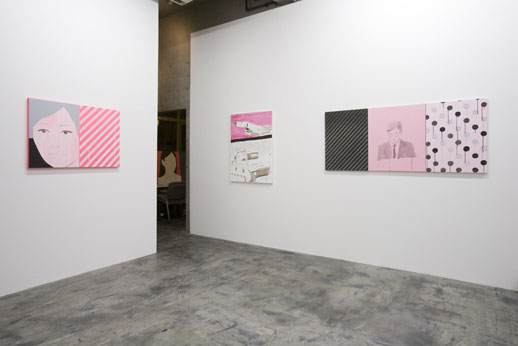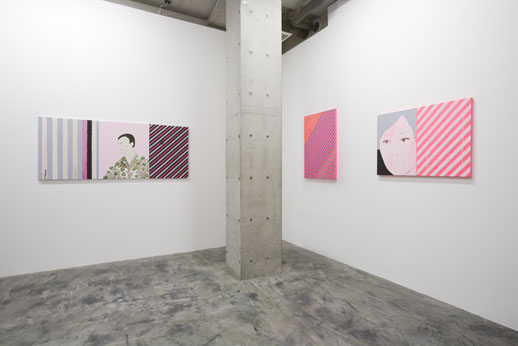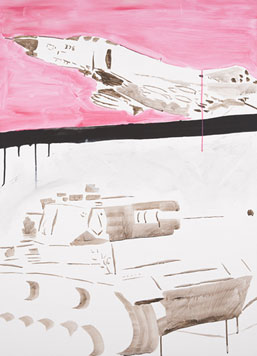Confronting the Persistent Flicker of the Television
As the title fittingly suggests, this series of paintings by Minamikawa is replete with iconography from recent media imagery, namely war and peace in a motif distinctly pink and black. What a classic dichotomy like ‘war’ and ‘peace’ really means for Minamikawa is what we find in these nine paintings on display at Misako & Rosen in North Tokyo.

Minamikawa’s recent set of works is at first considerably eye catching, next, engaging and ultimately direct. His paintings are triptych of a kind, with geometric abstractions to the left and right and figuration in the center. Simple, familiar patterns such as slanted, parallel or zigzagging lines or polka dots provide emphasis to the broadly stroked, simplified and iconic subjects of the central panels.

Working off perceptions of recent news reel content seemingly dominated by televised wars, Minamikawa contemplates and approaches this topic with simplistic renditions of what comes across as a pornography of death — heavy tanks and billion-dollar fighter jets (which seem to be distinctively American) in action. Minamikawa accepts these as symbols of the modern age, now taken for granted on news broadcasts tainted with all-too-familiar images of war and genocide. Given that of course he is being selective of what media imagery he’s affected by and chooses to use in his work, it is clear that Minamikawa is communicating the sense that something is wrong with the current state of affairs. Whereas the idea of peace is often related through optimism, Minamikawa seems to imply that peace is simply the time when the war machines are off.

Nevertheless, with such an approach, Minamikawa isn’t necessarily presenting a painting, but rather the suggestion of a possible painting. I would go so far as to say his approach is more apathetic than proactive in terms of the voices we tend to hear against war. Of course there’s the impetus to create these works, but does Minamikawa feel it unnecessary to paint his subject matter in clearer detail? Is the reality of the newsreel enough for a steady diet? Aware of the paradox we face when needing to trust the media as honestly communicative, and yet feeling the subtle dissonance of the void emanating from it, perhaps Minamikawa’s works are an attempt to fill such an emotional, communicative and cathartic gap.


